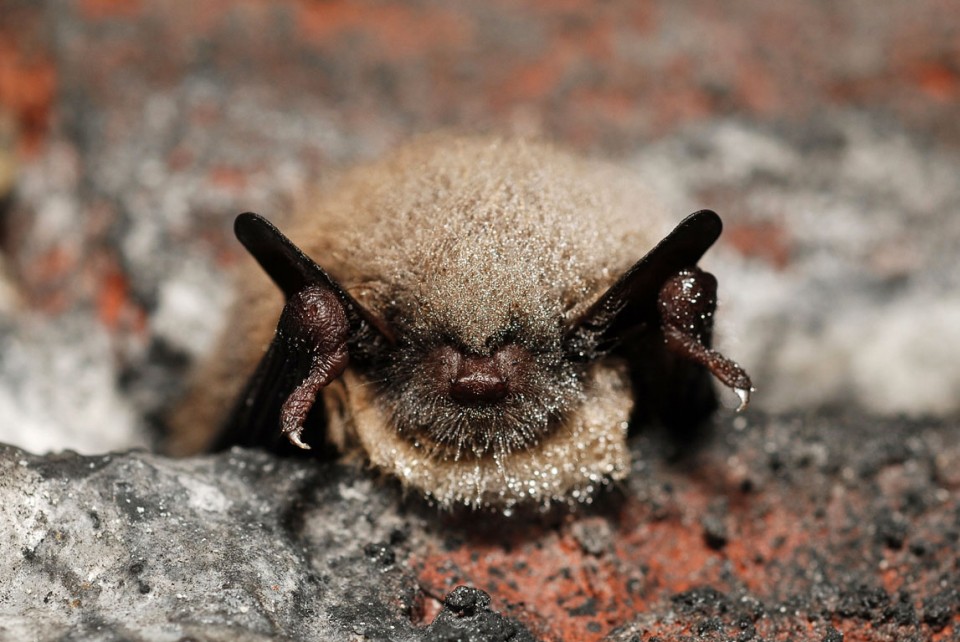Bats - Hibernation & Torpor

Bats are among only three British mammals that truly hibernate, the others being hedgehogs and dormice, because during the colder autumns and winter months there are too few insects to make hunting energetically worthwhile. In his book Bats, Phil Richardson notes that, during hibernation, a bat’s heartbeat can drop to about 20 beats per minute (bmp), taking about five breaths per minute. This is a significant decrease for a microbat, which may have a heart rate as high as 900 to 1000 bpm during feeding. By lowering their heart rate and metabolism (oxygen consumption can drop to one hundredth of waking rates) the bats burn fewer calories per unit time and can survive off the fat reserves they built up during the spring and summer months.
In a 2003 paper for the journal Doklady Biological Sciences, a group of Russian scientists report on the hibernation of two species of vesper (so-called “evening”) bats in central and southern Yakutia, a territory in the extreme north of Asia. The biologists found that the body temperature of hibernating northern (Eptesicus nilssoni) and brown bats (Plecotus auritus) only slightly differed from the ambient; both the bats’ body temperature and the environmental temperature trailed each other precisely between two and zero Celsius (35.6 and 32 F). The team also report that the periods of hypothermia in bats lasted for just under three weeks and that, in principle at least, bat hibernation resembles that seen in rodents. The paper also notes that, despite the common sight of hundreds of bats grouped close together in a roost during periods of rest, the hibernating bats observed during this study hibernated singularly, with distances of ten to several hundred metres separating them.
Bats will select their hibernacula (the place they choose to hibernate in) very carefully according to temperature, moisture and location. Generally, bats will opt for hibernacula where the temperature is around 5 C (41 F). In their 2003 paper for Zoological Science, Ling-Ling Lee and Ying-Yi Ho of the National Taiwan University report that Formosan leaf-nosed bats (Hipposideros armiger terasensis) chose hibernacula with lower entrances and ceilings than summer roosts and the hibernacula had a relative humidity of almost 100%, which is needed to prevent dehydration. Hibernacula can be hollows in trees, mining shafts, caves or houses. Intriguingly, the adage of “bats in the belfry”, first coined by Devonshire novelist Eden Phillpotts to denote insanity, is largely untrue. Bats certainly inhabit churches, frequently causing damage to fabrics, brass plates and bronze ornaments with their excrement, but they seem to prefer the roof or south porch to the colder, draughty and cyclically noisy belfry.

Bats will not necessarily hibernate for the entirety of winter; frequently they’ll wake on mild nights to go and forage for insects. In their Yakuita bat hibernation study, the Russian researchers found that the bats spent most of the hibernation period in a state of numbness, being active for only one or two percent of the time. During the three months that Anufriev and his colleagues observed these bats, they became active for short periods (30 minutes to one hour) on 11 occasions. Spontaneous waking of these bats was associated with a rapid increase in body temperature from 2C anywhere up to almost 19C (66F). This highlights a problem hibernation poses for bats: waking up requires a substantial amount of energy. Although the bats in the Russian study awoke 11 times, some bats only store sufficient energy to wake four or five times (they must become active periodically to drink and void waste) making the threat of hibernacula disturbance a serious problem. Waking generally takes about 15 to 20 minutes, although some species can only raise their body temperature by about a degree or two every two minutes, taking an hour or more to become active.
If the weather is poor for several consecutive days, bats will go into a state of torpor. Torpor is a less extreme version of hibernation (e.g. without a decrease in body temperature) that saves energy. There is a noticeable reduction in insect activity during periods of heavy rain and when temperatures drop below about 10C (50F); hunting during in conditions would cost the bat more energy than it could regain from eating insects. During these periods of poor prey availability, the bats will stay in their roosts, reducing their heart rate to between 40 and 80 bpm and oxygen consumption to about one tenth of the active rate.